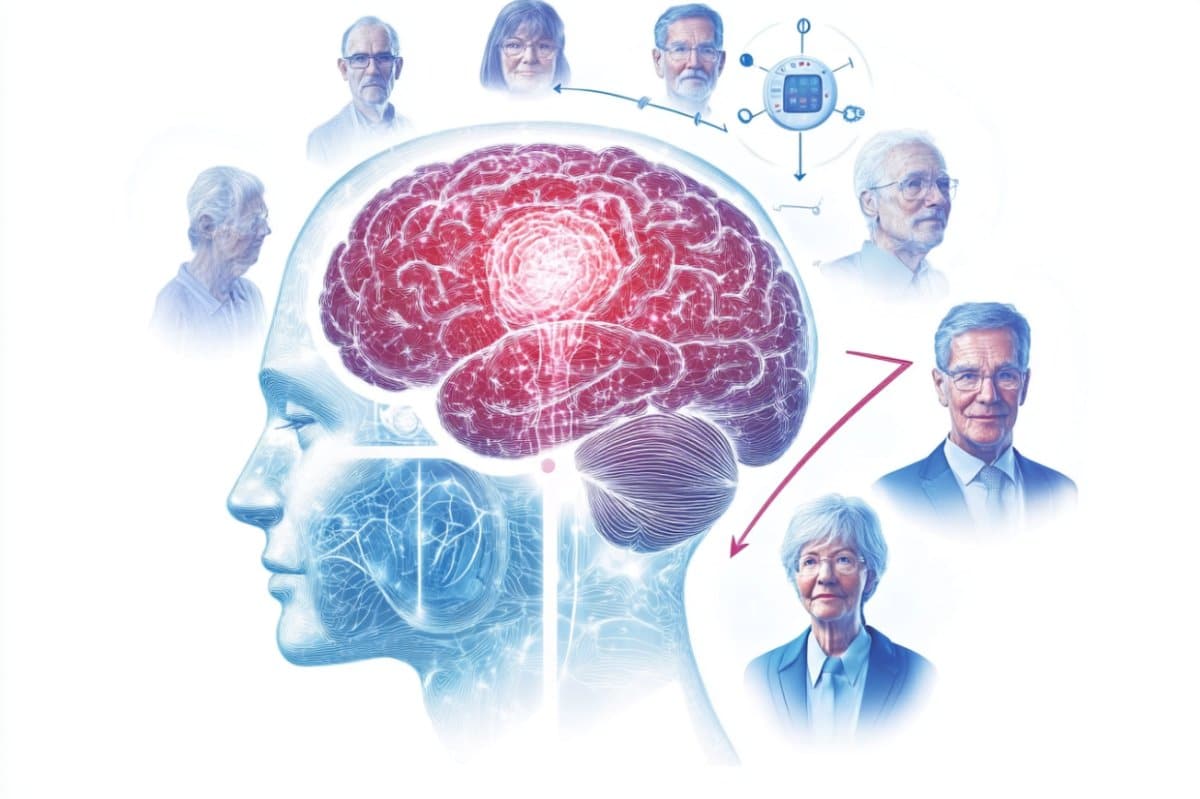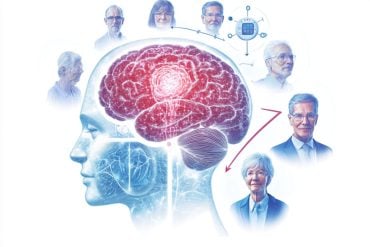Summary: A new study reveals that type 2 diabetes is associated with thinning of the brain’s cortex in older adults, particularly in regions responsible for memory and cognition. Using brain scans from a diverse population sample, researchers found that poor blood sugar control may contribute to this structural brain change.
The strongest associations were seen in Hispanic participants, emphasizing the need for tailored interventions to manage diabetes and protect brain health. The findings suggest that effective diabetes treatment could play a critical role in preserving cognitive function as people age.
Key Facts:
- Brain Impact: T2DM is linked to cortical thinning in key cognitive regions.
- Glycemic Control Matters: Poor blood sugar regulation appears to drive these changes.
- Health Disparities: Effects were strongest in Hispanic participants, showing variation by ethnicity.
Source: USC
A new USC-led study has uncovered a significant link between type 2 diabetes mellitus and cortical thickness in older adults from various populations.
Researchers from the Keck School of Medicine of USC’s Mark and Mary Stevens Neuroimaging and Informatics Institute (Stevens INI), the University of North Texas Health Science Center, and the University of Texas at Austin have just published their findings in Alzheimer’s & Dementia: Diagnosis, Assessment & Disease Monitoring.

The study highlights the potential impact of diabetes on brain structure and the importance of managing blood sugar levels to protect brain health in older age.
Type 2 diabetes mellitus (T2DM) is a chronic condition that affects one in ten Americans. If left uncontrolled, it can lead to serious health problems affecting the circulatory, nervous, and immune systems.
The research team found that individuals with T2DM exhibited a significantly thinner cortex, particularly in the temporal and parietal regions of the brain, which are critical for memory and cognitive function.
The researchers utilized advanced neuroimaging techniques to analyze cortical thickness and hippocampal volume in participants from the Health and Aging Brain Study-Health Disparities (HABS-HD) cohort.
The study’s diverse sample, comprising Hispanic, non-Hispanic Black, and non-Hispanic white adults, provides critical insights into how diabetes affects brain health across different populations.
The team found poor glycemic control may be a key driver of the observed association between T2DM and cortical thinning.
“Since blood sugar levels can be managed with proper treatment and lifestyle interventions, our findings highlight the potential for protecting brain health through better diabetes management,” says Amaryllis A. Tsiknia, the PhD student who led the study.
The researchers found that the association between T2DM and cortical thinning remained strong even after accounting for socioeconomic factors and common comorbidities such as hypertension, dyslipidemia, and obesity. Hispanic participants showed the strongest associations, while no significant effects were observed among non-Hispanic Black adults.
Given the rising prevalence of diabetes, particularly among minority populations, these results underscore the urgent need for targeted interventions to improve diabetes management and mitigate its neurological consequences.
“The disparities we observed by ethnic and racial group suggest that more work is needed to understand how exposures to various risk factors can work together in distinct ways across different people to determine brain health.
“Gaining this understanding is the first step in advancing personalized care that best protects the brain and cognition for each individual,” explained senior author Meredith N. Braskie, PhD, assistant professor of neurology, and a HABS-HD co-lead.
“This study and its results highlight the significant role of large-scale initiatives like HABS-HD, which is the most comprehensive study of Alzheimer’s disease and related dementias in diverse communities.
“HABS-HD provides invaluable data, including interviews, functional exams, blood draws, cognitive testing, brain MRIs, and clinical lab work.
“This data can lead to significant discoveries, such as this study’s link between type 2 diabetes and cortical thickness, underscoring the importance of the large-scale and global initiatives we specialize in at the Stevens INI,” said Stevens INI director Arthur W. Toga, PhD, who also serves as the neuroimaging and informatics lead for the HABS-HD study.
The research team anticipates longitudinal studies to determine if the observed brain changes result in accelerated cognitive decline over time.
Further studies exploring the effects of diabetes medications and lifestyle interventions could aid in identifying strategies to protect brain health in individuals with diabetes.
You can receive more information about accessing HABS-HD data here.
Funding: This research was supported by the National Institutes of Health (S10OD032285) and the National Institute on Aging (R01AG054073, R01AG058533, R01AG070862, P41EB015922, U19AG078109).
Authors on the study include Amaryllis A. Tsiknia, MSc; Victoria Tennant, BA; Noelle Lee, BA; Brandon J. Hall, MSc; Raul Vintimilla, MD; Nalini Hazra, MSc; Deydeep Kothapalli, MSc; Arthur W. Toga, PhD; Sid E. O’Bryant, PhD; Rajesh Nandy, PhD; Alexandra L. Clark, PhD; Melissa Petersen, PhD; Kristine Yaffe, MD; Meredith N. Braskie, PhD.
About this neurology and diabetes research news
Author: Laura LeBlanc
Source: USC
Contact: Laura LeBlanc – USC
Image: The image is credited to Neuroscience News
Original Research: Open access.
“Diabetes and cortical thickness in ethnically diverse cognitively normal older adults” by Amaryllis A. Tsiknia et al. Alzheimer’s & Dementia: Diagnosis, Assessment & Disease Monitoring
Abstract
Diabetes and cortical thickness in ethnically diverse cognitively normal older adults
INTRODUCTION
Mechanisms linking type 2 diabetes mellitus (T2DM) with dementia are poorly understood. We examined T2DM associations with cortical thickness and hippocampal volume in ethnoracially diverse, cognitively unimpaired older adults.
METHODS
In 2171 cognitively unimpaired older adults, we examined (1) how T2DM related to cortical thickness and hippocampal volume, (2) whether associations were independent of socioeconomic factors and comorbidities, (3) whether associations were driven by hyperglycemia or hyperinsulinemia, and (4) how associations varied by self-reported race/ethnicity.
RESULTS
T2DM was correlated with thinner cortex independent of socioeconomic factors and comorbidities, and this was driven by higher hemoglobin A1c (HbA1c). Higher HbA1c levels were correlated with thinner cortex in diabetics and non-diabetics. T2DM–cortical thickness associations were strong and widespread in Hispanic participants, modest and limited to temporal regions in non-Hispanic White participants, and not present in non-Hispanic Black adults.
DISCUSSION
T2DM is associated with a thinner cortex, and this is driven by poor glycemic control.






